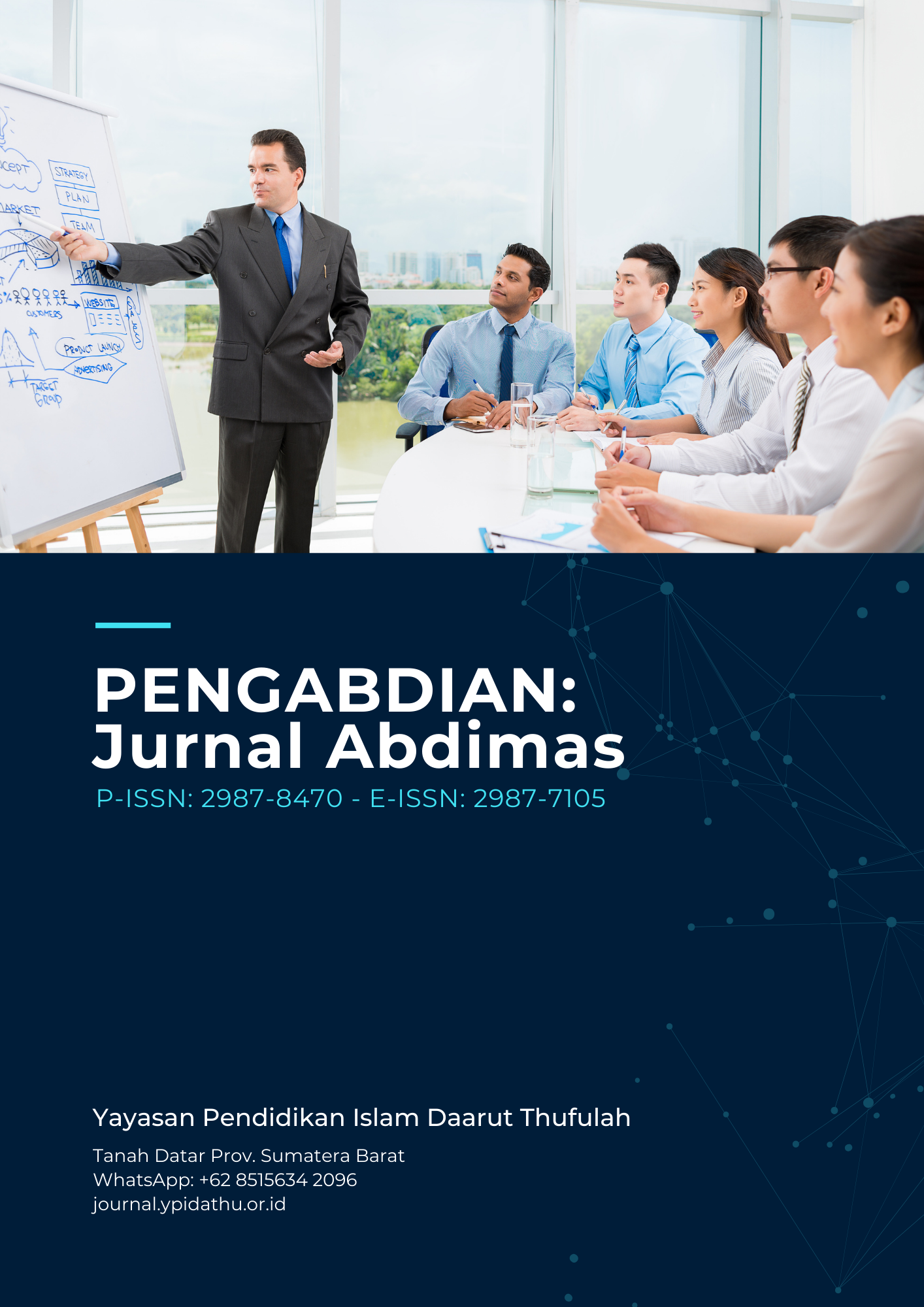Healthy Living Community Movement: KKN Initiative in Maintaining Environmental Cleanliness
Abstract
Background. Problems related to waste, pollution and low public awareness of the importance of maintaining cleanliness still occur in many areas. This can worsen public health problems, including an increase in diseases transmitted through waste and poor sanitation. The Healthy Living Community Movement (GERMAS) initiated by the Government aims to encourage people to adopt a healthy lifestyle, including environmental cleanliness. Through Real Work Lectures (KKN), students can play an active role in spreading awareness and implementing environmental cleanliness programs to support the realization of GERMAS at the community level.
Purpose. The purpose of this community service program initiative is to increase public awareness of the importance of maintaining environmental cleanliness as part of a healthy lifestyle. In addition, this program aims to empower communities to carry out voluntary and sustainable cleaning activities. Through the active participation of local communities, it is hoped that a cleaner and healthier environment can be created, free from the risk of disease due to poor environmental sanitation.
Method. The methods used in this community service program initiative include a participatory approach where students carry out environmental remediation activities with the local community.
Results. The results achieved through this community service program initiative show increasing public awareness of the importance of maintaining environmental cleanliness. Many residents have begun to actively participate in mutual cooperation efforts to clean the environment and manage waste better.
Conclusion. Inisiatif program pengabdian masyarakat gerakan Komunitas Hidup Sehat ini telah berhasil meningkatkan kesadaran masyarakat akan pentingnya kebersihan lingkungan sebagai bagian dari pola hidup sehat.
Full text article
References
Abbasi, M. S., Ahmed, N., Sajjad, B., Alshahrani, A., Saeed, S., Sarfaraz, S., … Abduljabbar, T. (2020). E-Learning perception and satisfaction among health sciences students amid the COVID-19 pandemic. Work, 67(3), 549–556. https://doi.org/10.3233/WOR-203308
Almahasees, Z., Mohsen, K., & Amin, M. O. (2021). Faculty’s and Students’ Perceptions of Online Learning During COVID-19. Frontiers in Education, 6, 638470. https://doi.org/10.3389/feduc.2021.638470
Alqahtani, A. Y., & Rajkhan, A. A. (2020). E-Learning Critical Success Factors during the COVID-19 Pandemic: A Comprehensive Analysis of E-Learning Managerial Perspectives. Education Sciences, 10(9), 216. https://doi.org/10.3390/educsci10090216
Andersson, G., Titov, N., Dear, B. F., Rozental, A., & Carlbring, P. (2019). Internet?delivered psychological treatments: From innovation to implementation. World Psychiatry, 18(1), 20–28. https://doi.org/10.1002/wps.20610
Becht, E., McInnes, L., Healy, J., Dutertre, C.-A., Kwok, I. W. H., Ng, L. G., … Newell, E. W. (2019). Dimensionality reduction for visualizing single-cell data using UMAP. Nature Biotechnology, 37(1), 38–44. https://doi.org/10.1038/nbt.4314
Brooks, S. K., Webster, R. K., Smith, L. E., Woodland, L., Wessely, S., Greenberg, N., & Rubin, G. J. (2020). The psychological impact of quarantine and how to reduce it: Rapid review of the evidence. The Lancet, 395(10227), 912–920. https://doi.org/10.1016/S0140-6736(20)30460-8
Chia, W. N., Zhu, F., Ong, S. W. X., Young, B. E., Fong, S.-W., Le Bert, N., … Wang, L.-F. (2021). Dynamics of SARS-CoV-2 neutralising antibody responses and duration of immunity: A longitudinal study. The Lancet Microbe, 2(6), e240–e249. https://doi.org/10.1016/S2666-5247(21)00025-2
Dong, K., Jiang, Q., Shahbaz, M., & Zhao, J. (2021). Does low-carbon energy transition mitigate energy poverty? The case of natural gas for China. Energy Economics, 99, 105324. https://doi.org/10.1016/j.eneco.2021.105324
Onder, G., Rezza, G., & Brusaferro, S. (2020). Case-Fatality Rate and Characteristics of Patients Dying in Relation to COVID-19 in Italy. JAMA. https://doi.org/10.1001/jama.2020.4683
Shin, H., & Kang, J. (2020). Reducing perceived health risk to attract hotel customers in the COVID-19 pandemic era: Focused on technology innovation for social distancing and cleanliness. International Journal of Hospitality Management, 91, 102664. https://doi.org/10.1016/j.ijhm.2020.102664
Ting, D. S. W., Carin, L., Dzau, V., & Wong, T. Y. (2020). Digital technology and COVID-19. Nature Medicine, 26(4), 459–461. https://doi.org/10.1038/s41591-020-0824-5
Zhao, Q., Meng, M., Kumar, R., Wu, Y., Huang, J., Lian, N., … Lin, S. (2020). The impact of COPD and smoking history on the severity of COVID?19: A systemic review and meta?analysis. Journal of Medical Virology, 92(10), 1915–1921. https://doi.org/10.1002/jmv.25889
Authors
Copyright (c) 2025 Adi Lusi, Amrina Amrina, Syafiq Amir

This work is licensed under a Creative Commons Attribution-ShareAlike 4.0 International License.





